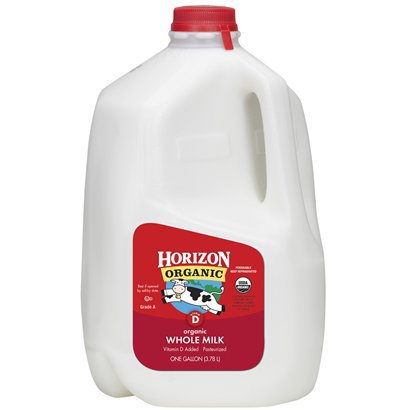Difference Between 2 Percent and Whole Milk
Ever wonder what type of milk you consume on a daily basis? If you’re like most of the Americans, chances are you’re buying one of the following: whole milk, skim milk, 1 percent, and 2 percent milk. 2 percent and whole milk are two of the most common type of milk available out there. Each one packs the same amount of protein, calcium, vitamins, and minerals. However, the main difference between them is the amount of fat, which is specified on the milk container. Here’s what you need to know about the difference between the two.

Difference between 2% Percent and Whole Milk
Basic
2 percent milk refers to the reduced-fat milk where the ‘2’ refers to the percent of fat by weight the milk contains. The amount of fat in the milk is the proportion of milk by weight that is made of butterfat. Whole milk, on the other hand, is the most commonly consumed milk which is only about 3.5 percent fat and is the closest it comes from the cow before processing.
Calories
Whole milk contains more fat because it’s higher in calories than the 2 percent milk. Thus, it’s considered high-fat milk. One serving of whole milk is equal to one cup and contains 150 calories and 8 grams of fat. The same serving of 2 percent milk contains 120 calories and 5 grams of fat. The 2 percent refers to the weight of the milk, but not its calories.
Health
The whole milk is rich in fat but with less added ingredients which are good for babies. However, it provides more than 50 percent of its calories from fat which makes it a high-fat food, which is in fact not good for heart. The abundance of vitamins and minerals in the 2 percent milk makes it a healthy alternative than the whole milk.
2 Percent vs. Whole Milk: Comparison Chart

Summary of 2% vs. Whole Milk
Both whole milk and 2 percent milk are good source of nutrients and contain almost equal amount of protein, calcium, vitamins, and minerals, but 2 percent milk contains half the fat content of whole milk. One cup of 2 percent milk provides 120 calories and 5 grams of fat, whereas one cup of whole milk contains 150 calories and 8 grams of fat. The 2 percent refers to the weight of the milk, not its calories.
- Difference Between Caucus and Primary - June 18, 2024
- Difference Between PPO and POS - May 30, 2024
- Difference Between RFID and NFC - May 28, 2024
Search DifferenceBetween.net :
3 Comments
Leave a Response
References :
[0]Gonzalez, Maura H. Way to Eat: A Six-step Path to Lifelong Weight Control. Illinois: Sourcebooks, Inc., 2002. Print
[1]Ronzio, Robert A. The Encyclopedia of Nutrition and Good Health. NYC: Infobase Publishing, 2003. Print
[2]Image credit: https://www.flickr.com/photos/76969036@N02/7619082090

It sounds like an illiterate retard wrote this article.
oh My! This article is full of flaws. 8 grams of fat is NOT twice as much as 5 grams of fat. It is 1.6 times as any grade school kid could figure. Also
“Whole milk contains more fat because it’s higher in calories than the 2 percent milk”
No! Whole milk contains more Calories because it contains more fat. Not the reverse as you stated.
Sorry to pick but facts are facts and there are a few wrong here.
Lol